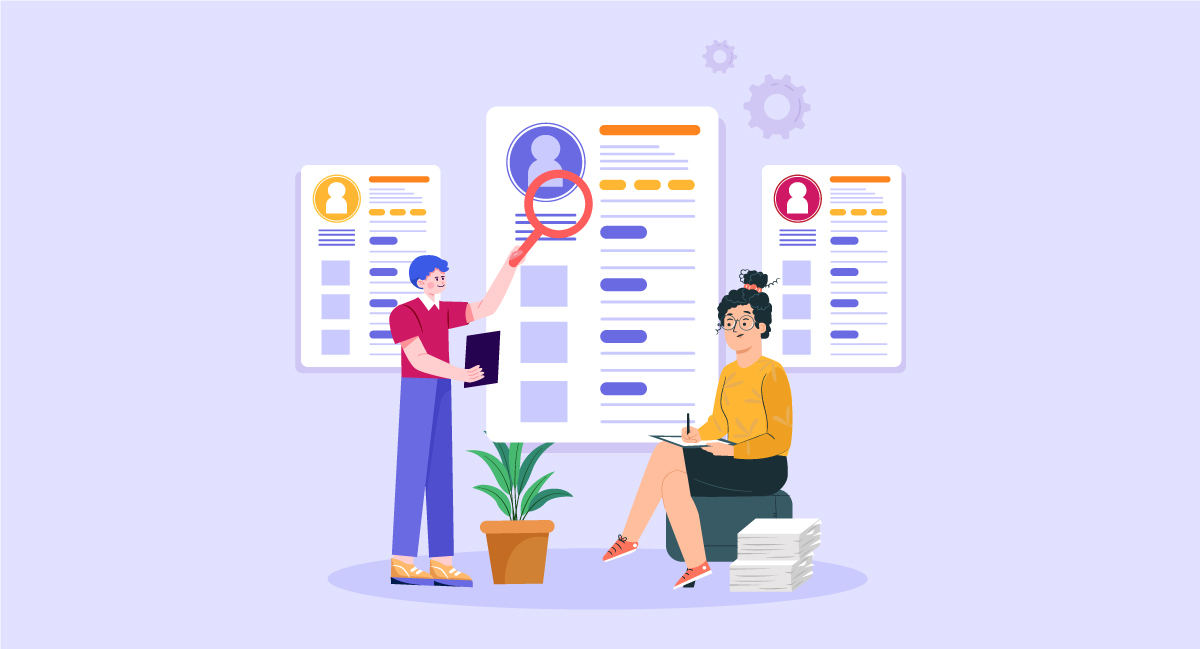In today’s complex work environment, it’s no longer enough for HR professionals to handle basic administrative tasks. Organizations need HR leaders who understand the core business and strategic workforce planning to gain a competitive edge.
Enter the HR business partner (HRBP).
HR business partners have become indispensable to organizational performance. Why? HRBPs go beyond siloed HR responsibilities. They collaborate with managers to shape high-performing teams, develop talent strategies aligned with business objectives, and promote engagement around the company’s mission and values.
But what is the HRBP meaning, and what exactly does an HRBP do day-to-day? What skills does this role require to be effective? How can HRBPs make an impact as true strategic partners? This guide will uncover everything you need to know about this critical job and how they enhance human resources management.
What Is an HR Business Partner?
HR business partners are strategic advisors who help business leaders manage and optimize their most important asset – their people. The primary focus of HRBPs is to optimize the employee experience and workforce environment to enable key business objectives. They take a big-picture view of the organization when considering talent needs, org structure, culture, and more.
Pro-tip
View HRBPs as true strategic partners, not just HR liaisons. Integrate them into core business decision-making and planning processes to apply a talent strategy lens. When HRBPs are aligned with business priorities with a seat at the leadership table, they can provide more impactful guidance to optimize human capital investments.
HRBPs identify obstacles and opportunities related to people. Whether it’s assessing new roles needed for a launch, analyzing retention patterns, or advising on a realignment, HRBPs provide recommendations through the lens of business impact.
The role of HR managers is to handle the operational tasks of the HR department. At the same time, HRBPs consult on initiatives that shape high-performing teams, strong leaders, and a culture of engagement and performance. They focus less on pre-defined HR processes and more on data-driven insights and solutions.
What Does an HR Business Partner Do?
A human resources business partner plays a multifaceted, strategic role. But what exactly does an HRBP do on a day-to-day basis? Here are some of the key HRBP roles and responsibilities:
1. Strategic Planning
- Work closely with business leaders on long-term workforce planning, talent strategy, and people objectives.
- Provide insights on anticipated organizational needs and gaps based on growth plans and industry trends.
- Advise on optimal org structure, job design, and team dynamics for high performance.
2. Talent Management
- Partner with managers on hiring strategies to attract and retain top talent.
- Consult on workforce development initiatives, training needs, and succession planning.
- Coach leaders on performance management, engagement practices, and career development.
3. Business Alignment
- Identify people-related obstacles, risks, and opportunities that impact business goals.
- Recommend optimizations to policies, practices, and processes to support objectives.
- Translate business priorities into HR initiatives that drive results.
4. Analytics and Reporting
- Conduct workforce data analysis to uncover trends, issues, and insights.
- Report on the progress of HR initiatives and programs to demonstrate business impact.
- Provide metrics to managers to help inform people’s decisions and strategies.
5. Culture and Engagement
- Assess and enhance aspects of company culture that enable performance.
- Partner with leaders on change management and employee experience.
- Advise on strategies to improve engagement, inclusion, and retention.
The HR business partner role is proactive and responsive, balancing long-term strategic planning and handling immediate people-related needs that impact business performance.
What Is an HR Business Partner Model?
An HRBP model strategically aligns HR professionals as dedicated HR business partners to key business units. Rather than centralizing all HR staff into a shared services group, embedded HRBPs operate as part of their assigned business teams.
In this model, HRBPs focus on strategic people management and talent consulting. This allows them to develop deeper business acumen and the partnerships needed to address business challenges. They take on proactive talent strategy while HR centers of expertise handle operational execution.
Some key aspects of the HRBP model include:
- Embedded Partnerships: HRBPs are aligned and integrated with specific business units to become true partners.
- Business Understanding: HRBPs develop knowledge of their business strategy, priorities, and external market.
- Strategic Focus: HRBPs spend their time on workforce planning, talent management, and other strategic initiatives rather than day-to-day HR transactions.
- Centers of Expertise: Operational execution is centralized in COEs with specialized expertise in core HR functions like compensation, learning, and recruitment.
An HRBP model aims to enable stronger business partnerships, contextual decision-making, and proactive workforce strategy tailored to the business. When structured effectively, this model helps evolve HR into a strategic driver of business objectives.
Role and Responsibilities of an HR Business Partner (HRBP)
The HRBP role balances responsive consultation with proactive workforce planning and talent management. They are influencers who optimize human capital capabilities to drive productivity, performance, and business success.
The core responsibility of an HRBP is to understand the business context and priorities to consult on workforce strategies that support key objectives. Key HR business partner responsibilities include
- Building partnerships with leaders in an assigned business unit or region. This provides the business acumen to identify talent-related obstacles, risks, and opportunities.
- Conducting workforce analytics, reporting on HR metrics, and providing insights that help leaders make data-driven people decisions.
- Advising on organizational structure, job design, team dynamics, and people practices that drive business performance.
- Collaborating with managers on talent acquisition strategies, workforce planning, succession planning, engagement initiatives, and leadership development.
- Coaching leaders on fostering culture, managing team conflict, developing employees, and optimizing the employee experience.
- Partnering with managers on change management, transformation objectives, and employee communication.
- Developing tailored HR initiatives, programs, and interventions that align with unique business priorities and needs.
HR Business Partner Skills and Competencies
Now that you know what the roles and responsibilities of HR business partners are, let’s understand the skills and competencies they must possess to succeed.
1. Business Acumen
HR business partners develop extensive knowledge of their organization’s industry, competitive forces, market conditions, and strategic priorities. This enables them to design tailored HR initiatives supporting short- and long-term business goals. By keeping the external landscape and internal operations central when formulating workforce strategies, HRBPs play a pivotal role in anticipating and preparing for future talent needs as the business evolves.
2. Strategic Orientation
Rather than focusing solely on day-to-day HR tasks, HRBPs take a future-oriented approach to talent strategy. By thoroughly analyzing business objectives and forecasting organizational needs, they contribute to proactive planning around skills enhancement, capability development, and other priority areas. This big-picture perspective ensures the workforce adapts to the changing market to remain competitive.
3. Communication and Influence
HRBPs must have exceptional communication and influencing abilities to connect with diverse organizational stakeholders. They articulate complex ideas and data clearly, contextualizing information to resonate with each audience. By positioning themselves as trusted advisors, HRBPs secure buy-in and investment in HR programs that align with business goals. Their messaging and relationships help drive change.
4. Collaboration and Partnership
Collaborating across departments provides HRBPs with well-rounded insights into different needs and opportunities. HRBPs actively partner with leaders and managers to design solutions tailored to their talent challenges while maintaining alignment with company-wide objectives. This collaboration enables specialized support that complements the broader strategy.
5. Change Management
As a human resources partner, HRBPs play a critical role during mergers, acquisitions, restructuring, and other transitions by guiding employees through uncertain times. They minimize disruption by facilitating clear communication, evolving the culture, and implementing strategies to smooth the change. HRBPs’ expertise in the human aspects of change management enables successful navigation through transformations.
6. Data-Driven Decision Making
Leveraging workforce analytics and metrics enable HRBPs to gain meaningful insights to inform strategy. By tracking KPIs and analyzing trends, they identify areas of strength to leverage and gaps requiring attention. Rather than relying on intuition alone, this data-driven approach brings objectivity to talent management decisions and optimizations.
7. Talent Management
HRBPs oversee all aspects of the employee lifecycle, from recruitment through advancement to building a high-performing workforce. They partner with managers to select suitable candidates, enable onboarding, facilitate performance management, and develop career paths aligned with business priorities. Their specialized expertise optimizes talent management.
8. Leadership Development
HRBPs nurture high-potential employees by creating personalized development programs to strengthen the leadership pipeline. These include coaching, mentoring, stretch assignments, and formal training to build capabilities. By investing in emerging leaders, HRBPs help ensure the organization has the talent and continuity to sustain success.
9. Problem-Solving
HRBPs frequently tackle multifaceted people challenges requiring creative solutions. They address complex issues like conflict mediation, underperformance, and skill deficiencies by applying their expertise across HR domains and understanding organizational dynamics. HRBPs’ critical thinking and innovation generate solutions that meet the needs of employees and the business.
10. Cultural Awareness and Inclusion
HRBPs promote awareness of diverse perspectives by facilitating open dialogues and implementing training around unconscious bias and cultural sensitivity. They help ensure policies and practices do not disadvantage particular groups.
By role modeling respect, empathy, and appreciation for diversity, HRBPs set the tone for an inclusive culture. They also encourage team-building activities that break down silos and bring people together.
Conclusion
The HR business partner role has become indispensable to organizational success. As true strategic partners, HRBPs go beyond siloed HR responsibilities to directly impact the bottom line.
By aligning workforce objectives with business priorities, HRBPs provide the insights and people-centric strategies today’s data-driven companies need. Their leadership in talent management, capability building, and culture fosters high-performing teams that drive results. If you don’t already have an HRBP in your human resource management team, it’s time to hire one!
Frequently Asked Questions
What does HRBP stand for?
HRBP for human resources business partners. It refers to the role of human resources business partner, which has become a critical strategic function in many organizations. The HRBP’s meaning and purpose is to serve as a strategic advisor aligned with business priorities and needs.
What makes a successful HR business partner?
Successful HR business partners possess a blend of business acumen, strategic orientation, analytics capabilities, relationship-building skills, and HR expertise. Key competencies include interpreting data, thinking critically, influencing stakeholders, and translating business priorities into people strategies. Effective HRBPs partner with leaders to optimize talent, performance, and the employee experience.
What is the difference between an HR manager and a business partner?
While HR managers focus on developing and overseeing HR processes, programs, and day-to-day operations, HR business partners align talent strategy with business objectives. HRBPs take a big-picture approach to workforce planning and consulting managers on strategic people management. The HRBP role is more proactive, strategic, and integrated with business priorities.
What is the difference between an HR consultant and an HR business partner?
External HR consultants are brought in for specific projects or expertise, while HRBPs are internal strategic advisors embedded within the business. HRBPs have a contextual understanding of the organization to provide tailored, ongoing guidance. Consultants offer an outside perspective but may lack insider insights. The HRBP has a sustained, integrated partnership with business leaders.

Rohit Rajpal is an accomplished writer and data enthusiast passionate about unraveling the intricacies of information and data. With a deep understanding of the subject matter, Rohit strives to simplify complex concepts and make them accessible to readers. Rohit’s expertise in the field and his knack for clear and concise communication make his blog an invaluable resource for those seeking clarity in the data-driven world.
[adsanity_group align=’alignnone’ num_ads=1 num_columns=1 group_ids=’15192′]
Need Any Technology Assistance? Call Pursho @ 0731-6725516




